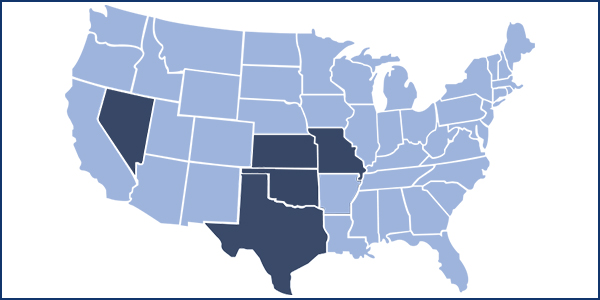FERC last week denied GridLiance High Plains’ rehearing request of an August order that said the company’s transmission facilities must still pass Order 888’s seven-factor test (ER18-2358).
The commission said it was unpersuaded by GridLiance’s arguments and sustained its original decision, which was based on its response to a certified question from an administrative law judge presiding over settlement proceedings between GridLiance and Xcel Energy Services. FERC said that qualifying as a transmission facility under Attachment AI of SPP’s Tariff does not eliminate the need to pass the seven-factor test.
Xcel protested GridLiance’s inclusion of its Oklahoma Panhandle facilities in its annual transmission revenue requirement, saying they do not qualify for regional cost allocation under the Tariff and would result in a cost-shift to its Southwestern Public Service subsidiary, which shares the same transmission pricing zone. (See GridLiance, Xcel Battle over Tx Qualifications.)
In asking for rehearing, GridLiance argued that the August order was contrary to Order 888, designed to ensure fair access and market treatment for transmission customers. The independent transmission company said 888’s seven-factor test was not intended as the exclusive test for determining which facilities are local distribution for jurisdictional purposes.
FERC established the test in 1996 to identify which facilities would be under the commission’s jurisdiction and what facilities would remain under state jurisdiction in states using unbundled retail wheeling. The test says local distribution facilities are normally low voltage, in close proximity to retail customers and primarily radial. It also says that power flows into local distribution systems, rarely flowing out.
Gridliance also said the August order was inconsistent with another order issued three days later, in which FERC approved MISO’s proposed Tariff revisions to incorporate criteria for classifying a storage facility as a transmission-only asset. The company said the commission’s approval served as “an alternative test that itself is sufficient to identify [commission]-jurisdictional transmission” and noted that SPP’s classification rules are more restrictive under the August order.
FERC responded that it viewed Attachment AI as “providing an initial screen to facilitate jurisdictional line drawing for facilities operated at or above 60 kV that will suffice to classify such facilities for inclusion under the SPP Tariff.” The commission said an entity could seek a determination from FERC or state regulators to classify or declassify any facility by applying the seven-factor test.
The commission also found GridLiance’s arguments regarding the MISO order to be irrelevant. It reminded the company that the certified question was in regards to the SPP Tariff’s application of the seven-factor test, which had no bearing on classifying a storage facility under MISO’s Tariff.
FERC said GridLiance did not cite any occasion where facilities meeting the Attachment AI criteria have been challenged and where the commission has declined to apply the seven-factor test. It said the entity’s contention that the August order will “drastically increase the volume of disputed facilities within SPP” is speculative and unsupported and rejected its demand for a Section 206 proceeding under the Federal Power Act.




